Best of Tokyo in 3 Days
Tokyo, Japan Travel Itinerary & Guide
3 Days in Tokyo, Japan
Experience all Tokyo has to offer with this ultimate 3-day itinerary that includes major spots and the best off the beaten path ideas you must see!
Day 1:
Start your journey in Tokyo with an intricate blend of traditional, contemporary, and futuristic experiences reflecting modern Japanese culture.
You’ll be using the Tokyo subway system, which is very efficient and safe to ride. With that being said, it can be confusing; I actually equate the Tokyo subway map to a bowl of spaghetti spilled on the floor…lines all intermingling that seem to have no rhyme or reason. To help simplify this complex system, most stations have very attentive and friendly station attendants who might not fully speak English but with some finger pointing and a map (usually located above the ticket machines) you should be able to get by easily. Most ticket vending machines are cash only, so make sure to pull out plenty of money. The machines will even accept 10,000 Yen bills and will still give out the appropriate change. Along with that note, Japan is still a heavily cash-based society so be sure to have plenty of cash on you. (Japan is generally safe if you use common sense, so you shouldn’t be too worried about carrying large amounts of cash.)
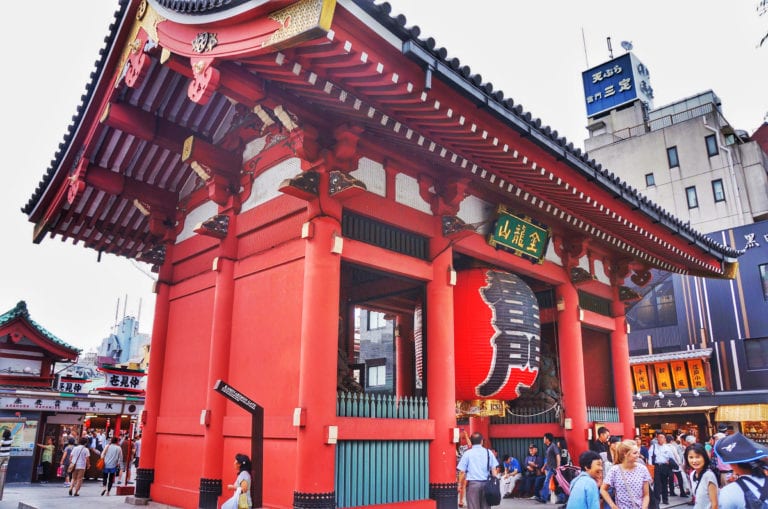
Sensoji Temple
Start your journey at Senso-Ji (Asakusa Kannon Temple) one of Tokyo’s most intricate and stunning temple complexes. Senso-Ji is an excellent place to kickoff gift shopping as many stores are lining the ground’s entryways. Be sure to purify yourself before entering the temple at the fountains to the left and right of the temple. Grab the ladle with your right hand and fill it with water, then pour a quarter of the water on your left hand, then place the ladle in your left hand, and pour a quarter of the water on your right hand, then place the ladle back into your right hand. Then this is where it gets a bit tricky, and many people fake this last part. Cup your left hand, pour the remaining water into your cupped left hand and either place it into your mouth, swish it around (don’t swallow!) then spit it out on the rocks below, or you can fake this part by not putting the water into your mouth and just have it fall to the rocks below. Then refill the ladle while holding it in your right hand still, and tilt it straight up, so the water falls down and cleans the handle. Now you are purified. You’ll also find a structure where incense are burned. Approach this area and when it’s your turn in line, fan the incense on any part of your body that is ailing or needs help. Many students fan it towards their heads to help power their brains for exams.
Senso-Ji (Asakusa Kannon Temple) can be accessed via Asakusa Station (Ginza Line) followed by a 7-minute walk to the grounds.
Walk Along Sumida River
Take a walk along Sumida river and enjoy the beautiful…and well interesting architecture, including the Asahi Beer Building, which has the “golden turd” on top. Originally it was supposed to be stood straight up and represent the flame and spirit of Tokyo, but due to fire regulations, it had to be put on its side.
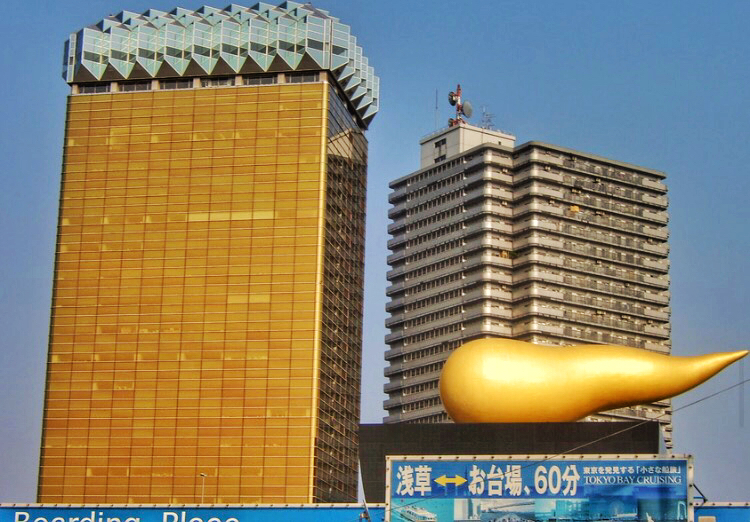
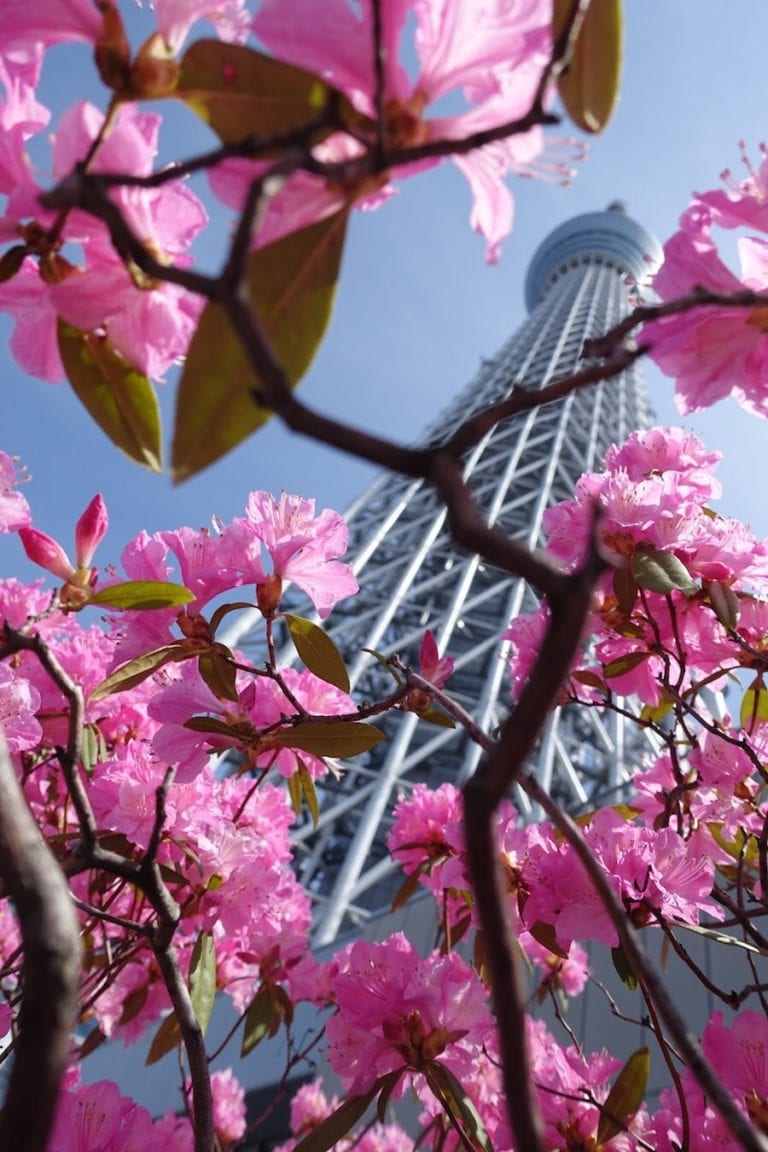
Tokyo Skytree
Take a 20-minute stroll from Senso-Ji Temple to the Tokyo Skytree. It’s quite a pleasant walk across the Sumida River. If you prefer not to walk there is the Number 8 bus which is a few minutes walk outside the Nitenmon Gate (the gate to the right if you’re facing the main temple).
I recommend heading straight to the ticket booths and get in line for the elevator to the top. The wait time can vary by day. Weekends and holidays will, of course, be jam-packed, but I think it took me around 20-30 minutes to get to the top. There is a lot of material to read and art to enjoy while you wait in line, so it’s not too painful. If I remember correctly there might even be free wifi to enjoy.
(Note: some days if the wind is too strong, they will close the main observation tower, and you can only go up to a lower observation deck that still has lovely views…and it’s free.)
The ticket to the main deck costs 2060 Yen (~$20), and if you’d like to go to the highest deck, it will cost an additional 1030 Yen (~$10).
There is an excellent cafe and restaurant at the main deck to grab lunch at or if you’d like there are dozens of fantastic restaurants at the base of the tower in Tokyo SkyTree Town. If you’re still in the mood for souvenir shopping, this is also a great destination!
Sumida River Cruise
From Tokyo Skytree Station take the Tobu Skytree Line back to Asakusa Station then it’s a 4-minute walk wrapping back towards the Sumida River to arrive at Asakusa pier. From here you’ll take the Odaiba Direct Line which features incredible views of the complex Japanese architecture bordering the river. You’ll also have the chance to ride the futuristic Himiko Boats. The boat ride takes around 50 minutes and will conclude at Odaiba pier.
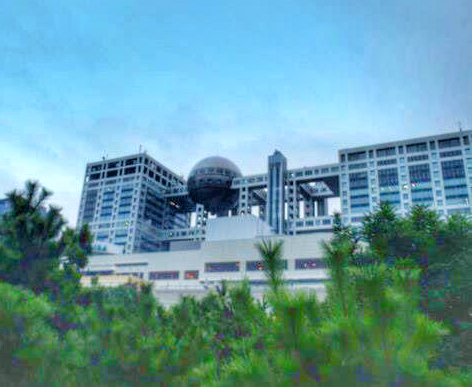
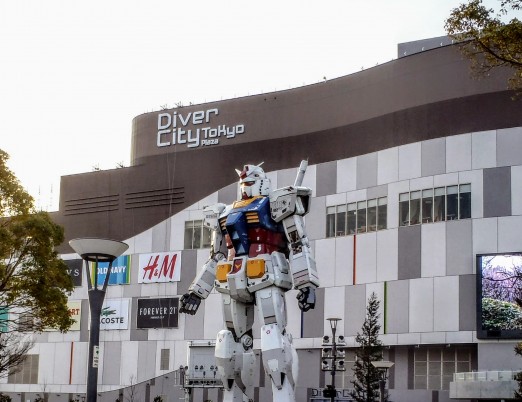
Gundam Base
Odaiba is a human-made island that hosts some of Tokyo’s favorite attractions, including the prized life-size Gundam statue at Daiver City! Yes, this is a great moment to geek out completely!
Tokyo Odaiba Onsen
Update: Since writing this itinerary Tokyo Odaiba Onsen and much of Daiver City has closed. Odaiba is going through a major transformation so please stay tuned for more info!
From here, there are two options depending on your comfort level and interests: Japanese hot spring or the Daiver City shopping mall. I cannot recommend enough visiting a Japanese hot spring! This hot spring is more of a “hot spring theme park” so it doesn’t necessarily have the beauty and serenity of the traditional experience, but it offers an excellent introduction. So how does this all work you might ask?
You first start by checking in, where they will give you a wristband that you will use to purchase things with, so no wallet is needed. Then you’ll get to choose which Yukata (Japanese robe) you would like to wear…there are plenty of really cool colors and patterns. At this point, men and women will separate for a few minutes while you put your stuff in lockers and change into your Yukata. Then men and women will joyfully reunite in the central area. Feel free to bring your camera or phone here as there are some cool photo opportunities! When you go into the main baths, you can either go back to the locker room and put your camera away, or there are open cubbies you can place it in if you feel comfortable.
I’d first recommend starting at the outdoor foot walking baths, where both genders are allowed together. This area consists of a small stream with stones at different heights to massage your feet…it hurts…but it hurts so good! For an additional fee, there are also foot baths where fish will eat off your dead skin. From there, it’s time to hit the main attraction, the hot springs! These areas are divided by gender. When you enter you will grab a towel then take off all of your clothes…yes all of your clothes. Clothing and their detergents ruin the purity of the hot spring water. You’ll then go to one of the shower stations and fully clean yourself off. Then from there, you can enter the various hot springs (indoor and outdoor), steam rooms, and cold baths. There are tons of different options, each with different temperatures or healing effects. Think about this area as a hot spring buffet, hop around and take your time to relax. When you’ve finished with the hot springs, rinse off one more time then dry off and get dressed. In the central area there are two things I strongly recommend right after exiting a hot spring: an ice-cold glass of milk or beer…yes milk for some reason is incredibly soothing! Grab food, play games (including having the chance to throw ninja stars) and reflect on the beautiful day and experiences you’ve had.
Note: you can also stay overnight at the hot spring!
If you’re not keen on hot springs or dropping your pants in front of dozens of strangers (completely understandable) head to Pallette Town, an artistic shopping area with an impressive food court! There is even a mini-Statue of Liberty outside and a great view of the Rainbow Bridge.
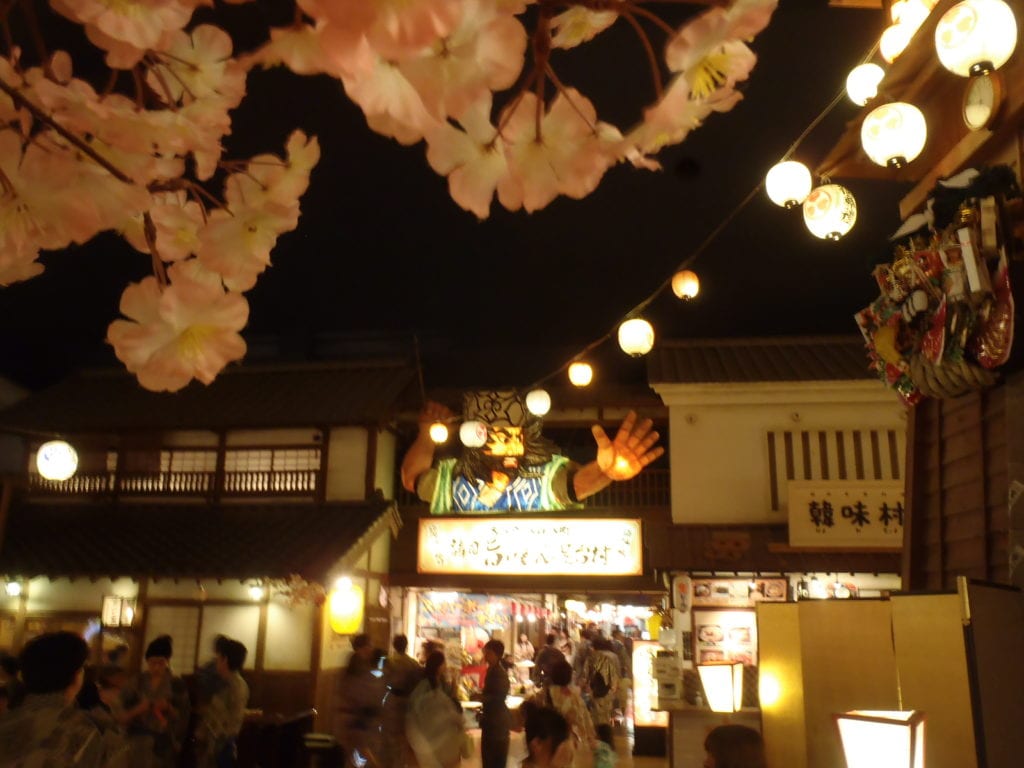
Day 2:
On this day you’ll experience a few different neighborhoods of Tokyo, blending in some of Tokyo’s major sites and some uniquely local secrets. Be sure to wear comfortable walking shoes as you’ll be putting in some good steps!
Tsukiji Market
You can’t visit Japan without trying fresh sushi, and there is no better place to do this than the world famous Tsukiji Fish Market. One of the most anticipated and exclusive experiences is the fish auctions. If you’d like more information on how to attend these, please read the following link: http://www.japan-guide.com/e/e3021.html For this itinerary, we suggest walking around the markets and stepping into one of the many sushi restaurants serving fresh Tsukiji fish!
Ginza
Time to walk off all the sushi you ate with a stroll through Ginza, Tokyo’s high-end shopping district to the Imperial Palace. The stores in Ginza are brands that you would find in most major cities, so unless you are a high-end shopper or love window shopping, I think a quick pass through is sufficient.
Fun fact about Ginza, the first McDonalds in Japan was opened here.
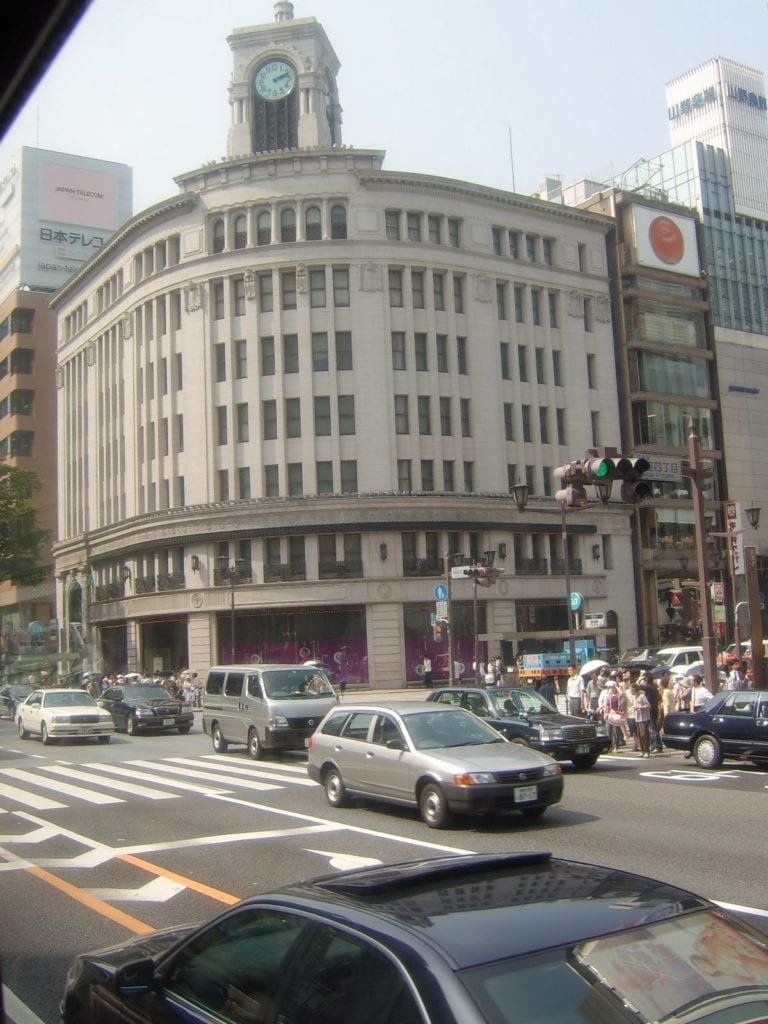
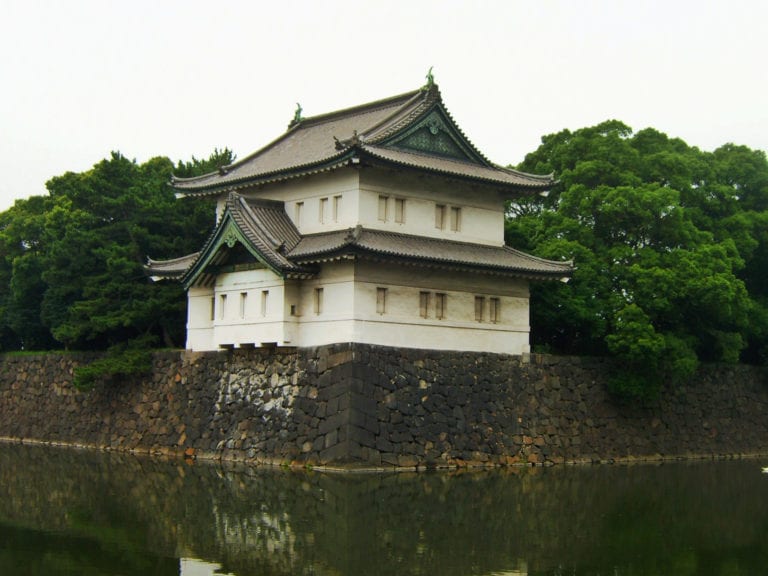
Imperial Palace
The Imperial Palace is the home to the current Emperor of Japan. You can enjoy the perfectly maintained gardens along the perimeter of the palace. The inside of the Imperial Palace is only open two days of the year: the Emperor’s Birthday and New Years Day (and then its only to very restricted areas to watch the Emperor give an address to the country).
Tokyo Station
From the Imperial Palace Grounds is a direct shot straight to the historic Tokyo Station. Tokyo Station’s architecture is a stark contrast to much of Japan, featuring strong hints of Western styles. Be sure to grab a bite to eat at one of the many delicious restaurants that the station has to offer.
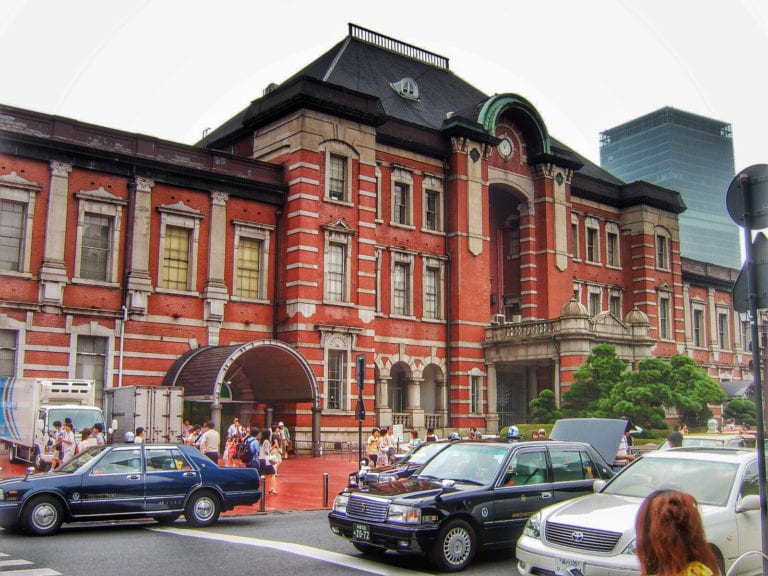
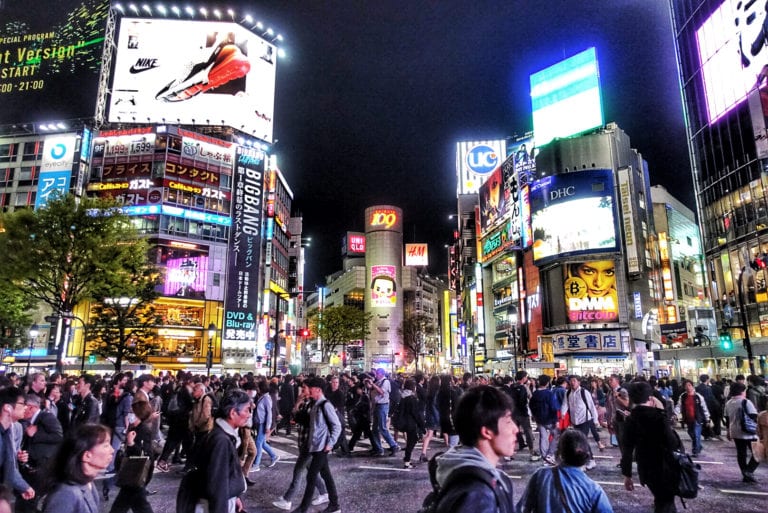
Shibuya Crossing
From Tokyo Station take the JR Yamanote Line to Shibuya Station. Take Hachiko-mae exit of Shibuya Station to find the eccentric and lively Shibuya Crossing. Enjoy sensory overload and the overwhelming beauty of one of the world’s busiest crossings.
Hachiko
A few feet from the crossing, you’ll find the statue of Hachiko. Grab a picture with him and make sure to give him a quick pet for his heroic loyalty. The story behind this statue is that Hachiko, the dog, would follow his owner every day to Shibuya station, then the owner would jump on the train, head to a university where the taught, and then Hachiko would meet him back at the station after his owner finished work. One day his owner passed away at work and never met Hachiko at the station. The dog returned every day at the same time waiting for his owner to return. He became a symbol of undying loyalty.
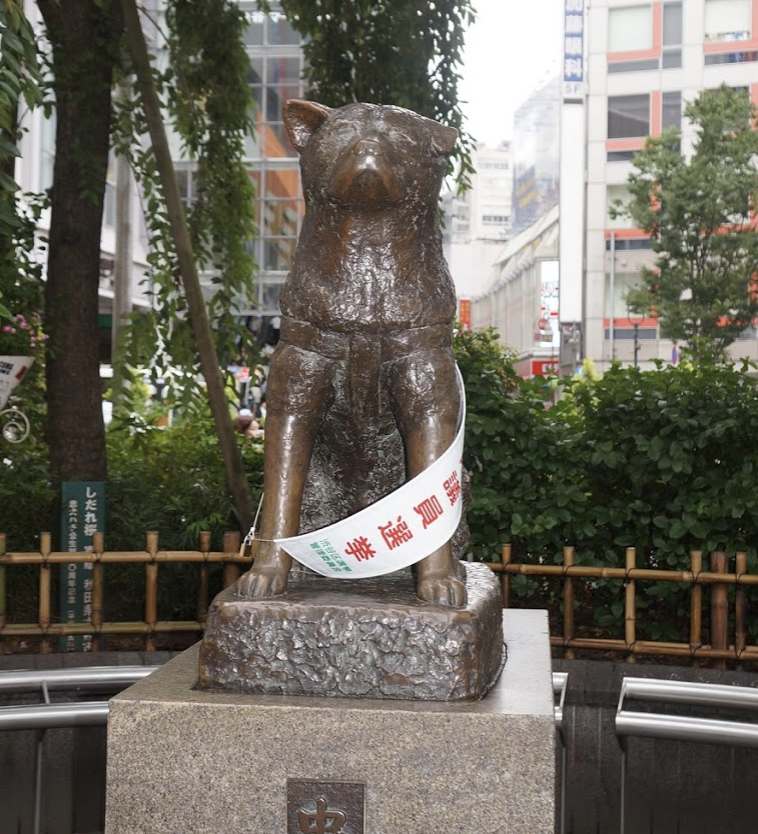
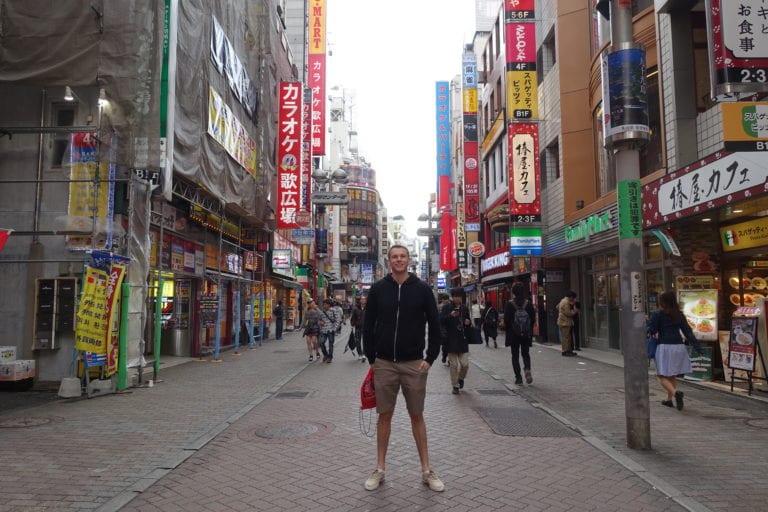
Sentaa-Gai
From there, it’s your turn to hit the crossing and be a part of the madness. Head towards Starbucks but veer slightly to the left to enter the Sentaa-Gai walking area. Check out all the cool stores and shopping opportunities here. If you want to get a good shot above Shibuya Crossing head into Starbucks and take the escalators to the second-floor seating area. You might have to be a little sneaky at this point as staff members might kindly ask you not to take photos unless you’ve purchased a drink (or you can be a good person and just buy a drink-which Starbucks in Japan always has a unique seasonal drink). Also, some other places unique to Tokyo to visit in Sentaa-Gai and the surrounding area is Shibuya 109 (a never-ending tower of the latest trends for high-school to college girls) and Shibuya 109 Men’s (the male version), Donkihote (the greatest store on earth that features everything you could imagine. The best part is the main aisle everyone has to walk through is the men’s underwear which features unique selections like Black Men’s underwear (a man thong) elephant underwear (what do you think goes in the trunk? and others). They do have great souvenir shopping on the first floor including a wide variety of Japanese flavored KitKats, including Green Tea, Sake, and Japanese apples.) A little past Donkihote and up to the left you’ll find Love Hotel Hill. A small area filled with Love Hotels, where very commonly Japanese couples go for a “stay” and can enjoy private facilities sometimes with costumes, toys, and jacuzzis. This area also has a lot of Shibuya’s trendy nightclubs….coincidence that the nightclubs and love hotels are next door to each other?
Update 2022: Since writing this Miyashita Park has opened up in Shibuya, which is a shopping area with a rooftop park that is very famous.
Shibuya Niku Yokocho
Meat lovers rejoice! Can you imagine an entire food block dedicated to just meat? Niku Yokocho is a food alley and court with some of Tokyo’s best meat restaurants. Feel free to sit at one restaurant and order from the other restaurants as well; the waitstaff will bring over your food so you can enjoy a wide variety of flavors. (Most of the restaurants have a map of the food alley so you can point on a map to where you’re sitting. When they bring your food, you’ll pay.)
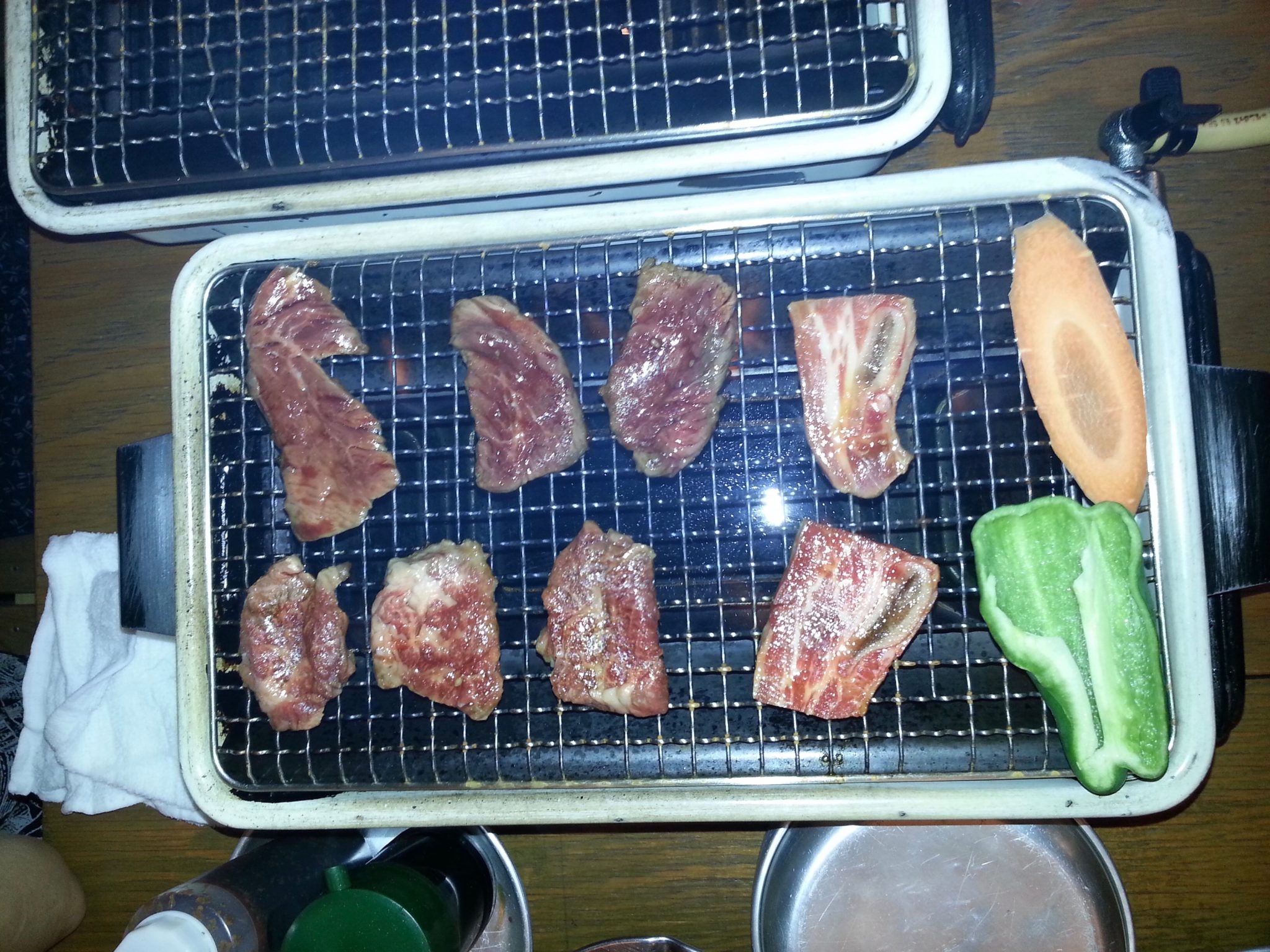
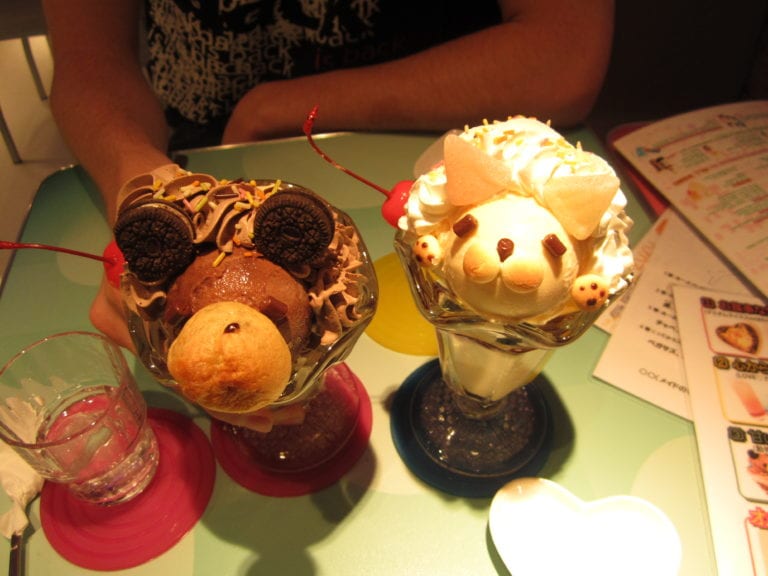
Maidreamin
A unique and interesting cultural phenomenon, Maid Cafes are probably the happiest place on earth (sorry Disneyland). Originating in Akihabara, Japanese Otaku (geeks) visit maid cafes to enjoy the company of young woman dressed in French maid costumes…purely platonic! Many Japanese men do not feel comfortable with speaking to women, so the Maid Cafe gives them a safe space. The maids greet you in the highest-pitched voice and in the Japanese language always refer to the customer as being God-like. You’ll enjoy cute designed meals, drinks, and you can play fun games with the maids, of course, everything costs something including the games and the photo with the maid. Almost all maid cafes require a table fee (usually around 500 yen to 1000 yen per person). I think they’re amusing to go to and every time someone visits Japan I recommend this as a bucket list item. After Niku Yokocho, I would recommend enjoying a great dessert.
Sound Museum Vision Night Club
If you’re interested in experiencing Tokyo’s nightclubbing scene, I’d recommend the following places: Sound Museum Vision, Club Asia, Womb (and avoid Gas Panic). Most clubs start popping around midnight and people club until around 4 am until the trains open up (most Tokyo trains stop service from 12:00 to 4:30 am). There is also Ageha, it’s not in Shibuya, but they have buses that run from Shibuya station. It’s one of Asia’s largest nightclubs, so you’re guaranteed to have a good time. Just note, it’s out in the middle of nowhere, and there are only select times the buses run to and from so you do end up a little stuck out there.
Day 3:
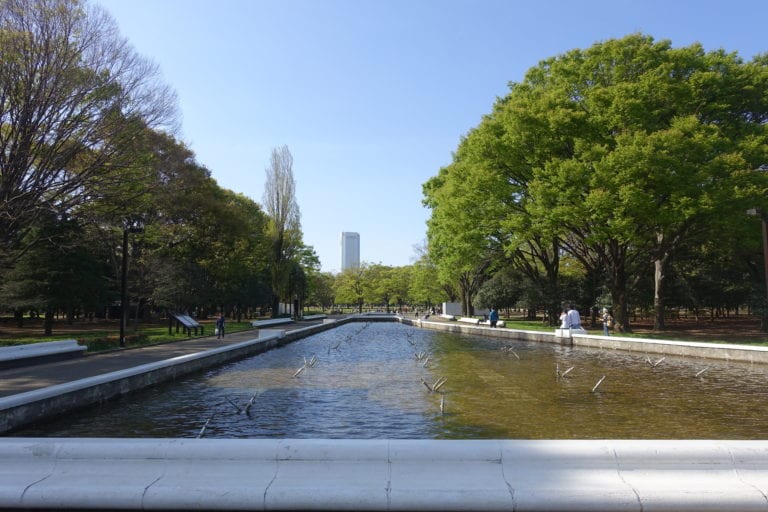
Yoyogi Park
Yoyogi Park is a very popular destination for the people of Tokyo on weekends, especially in the Spring for Cherry Blossom Season. Yoyogi Park is accessible via Harajuku Station. Take a quick stroll around the park or towards the entrance to see if the Rockabilly Dance Group is swinging around (a group of people who dress in sock hop-like clothes and dance like no one is watching while rocking out to air guitars).
Yoyogi National Gymnasium
Across the street from Yoyogi Park is the Yoyogi National Gymnasium. There is a pedestrian bridge connecting the entrance -area of Yoyogi Park to the gymnasium. Climb up the steps to get a good view of the unique architecture of the stadium which resembles the curves and designs of a Samurai’s helmet.
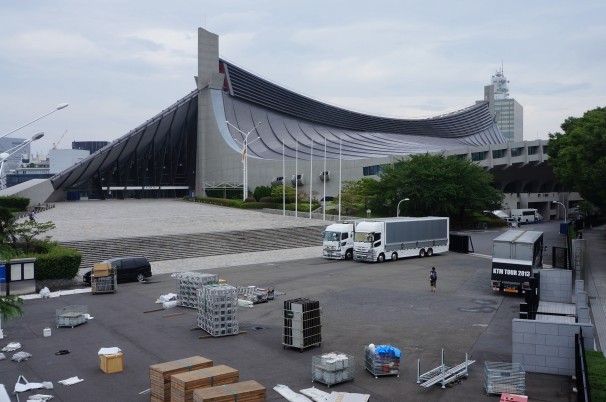
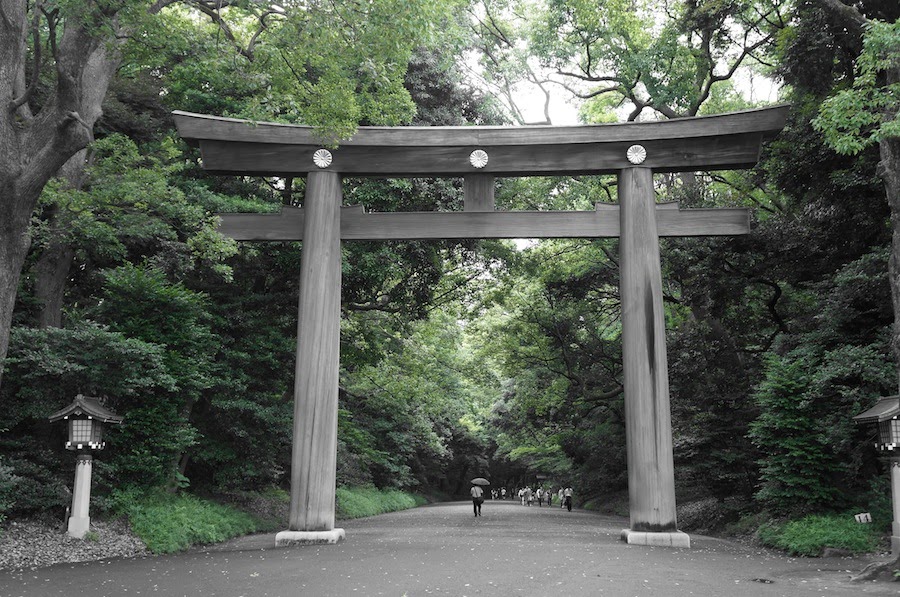
Meiji Shrine
Feet away from the National Gymnasium is the serene Meiji Shrine. Pass through the main Tori gate (Tori means bird in Japanese and these Tori gates represent an area where a spirit can come and visit like a bird on a perch.) The grounds surrounding the Meiji Shrine and inside are breathtaking. You’ll feel like you’ve been transported from the hustle and bustle of the metropolitan Tokyo to a beautiful Shrine in a forest.
Takeshita Dori
Takeshita-dori is a famous street that houses some of Japans latest pop trends and clothing stores. With intricate styles, this is a great place for gifts for home.
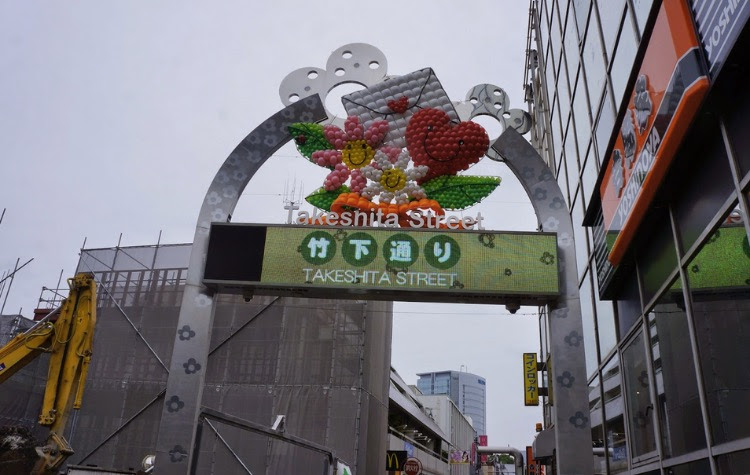
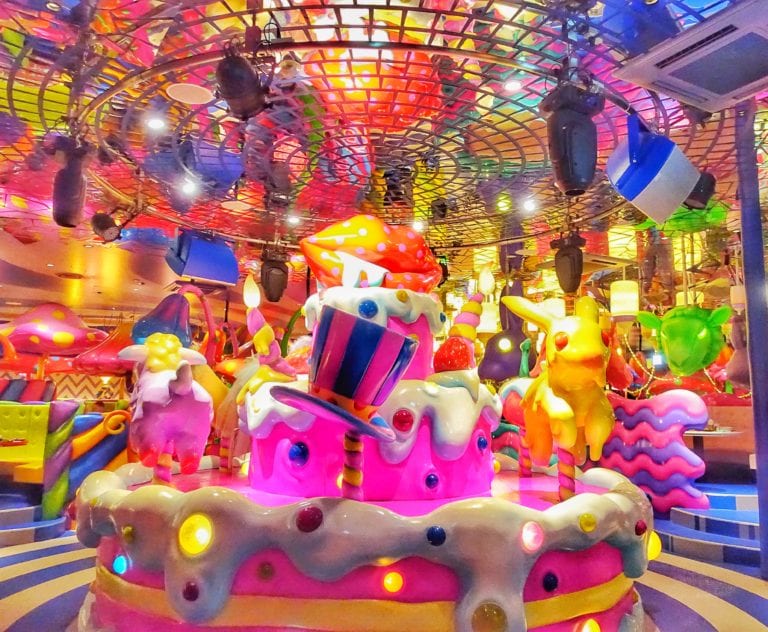
Kawaii Monster Cafe
A new edition to the themed restaurants in Tokyo, this cafe is beyond Instagramable! The concept is that Tokyo is truly a monster and sometimes only a few can survive this. Enter into the monster of Tokyo to find a whole new world with multiple dining areas that you’ll be able to choose from before entering. I believe there is a table fee here, and each person needs to order a food dish and drink…but don’t worry, once you see the menu you’ll want to order something including my favorite the non-druggy cocktail. Ask what time the next show is and be sure to watch it…will blow your mind!
Condomania
If you still need a good laugh after the cafe, visit Condom Mania on the corner of Omotesando. A small shop with some of the funniest condom and sex toy’s names, designs and styles.
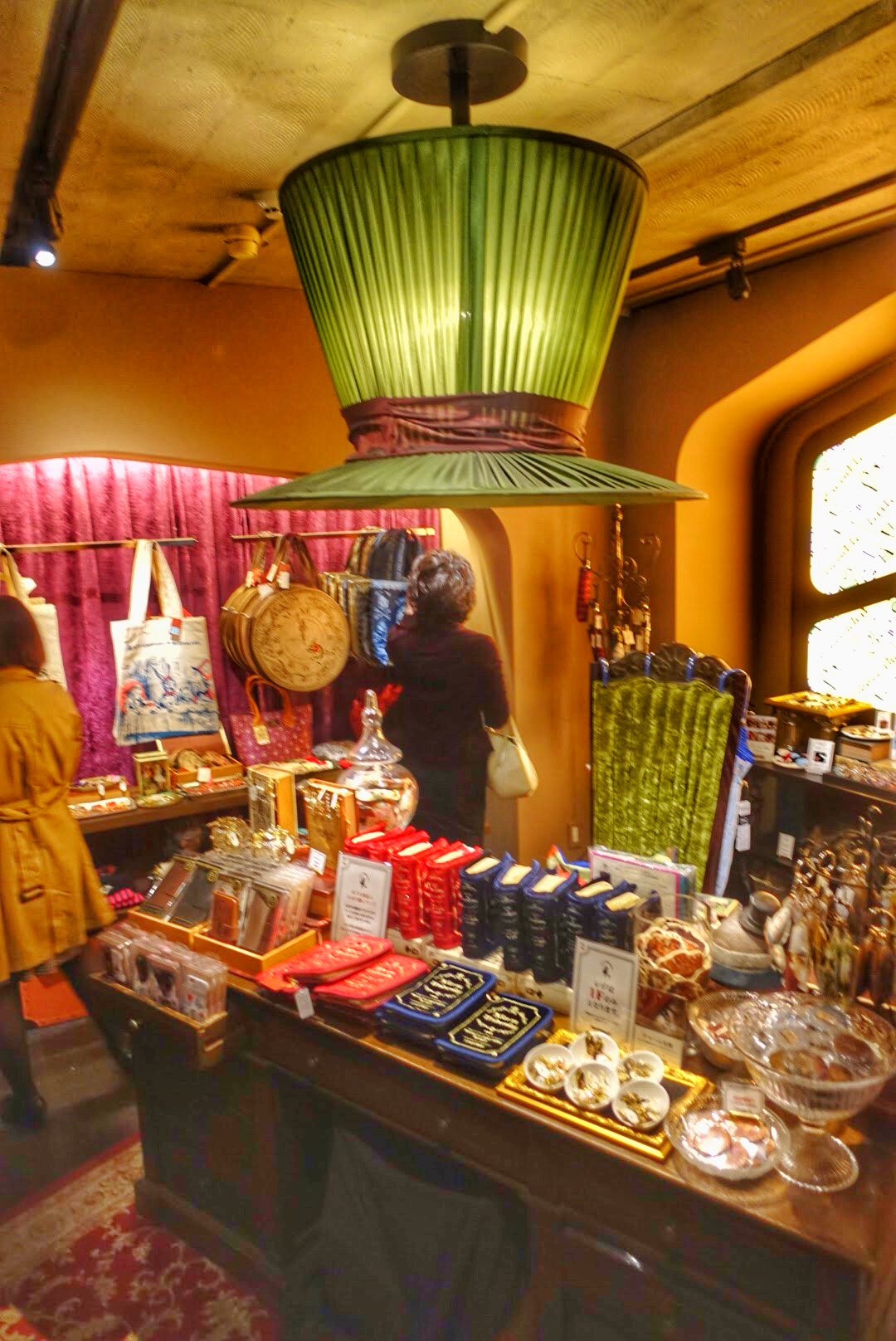
Alice on Wednesday
Are you a fan of Alice in Wonderland? Even if you just slightly know the concept of Alice in Wonderland this themed shop will put a smile on your face. From the entrance to the top of the three-story building, you’ll enjoy various references to the story while getting the chance to buy some great accessories or sweets.
Shinjuku National Park
Return to Harajuku Station then take the JR Yamanote to Shinjuku Station. It’s a 20-30 minute walk from here to the lovey Shinjuku National Park. It’s perfect any time of the year but stunning in the Spring and Fall. Take a stroll through the park and enjoy the wide variety of plants and arrangements.
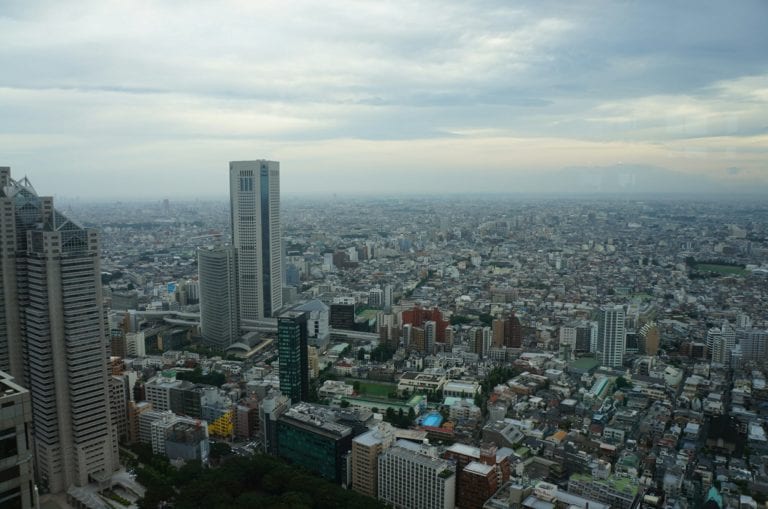
Tokyo Metropolitan Government Building
Return to Shinjuku Station then take a 10-minute walk to the Tokyo Metropolitan Building which offers great views of Tokyo for free! I recommend going towards sunset so you can see Tokyo at daytime, sunset and at night.
Haunted Tokyo Tour
Japan is a very spiritual place and with comes ghost and ghouls so it’s the perfect place to take a ghost tour with Haunted Tokyo. They offer a variety of tours including Ghosts and Goblins of Old Tokyo, Blood of Samurai, and Demons of the Red Light District. I thoroughly enjoyed the tour and thought it offered a new and fresh insight into Japanese culture, history, and beliefs. Check their website early to see when their next tours/times are and make a reservation. You won’t want to miss this unique, fascinating, and sometimes spooky experience!
Shinjuku Golden Gai
Grab drinks and dinner at the famous Shinjuku Golden Gai.
Tips and Tricks:
1. Having 30 million people in one metropolitan area, you naturally have to be a germaphobe, so try and avoid sneezing, blowing your nose, or coughing in public.
2. People are very quiet and respectful on trains, try to whisper.
3. Japan is still a very cash-based economy, for larger purchases credit cards are accepted but for the most part, cash is preferred.
4. Following tip 3: 7/11 and CitiBank ATMs are the best ATMs for foreign debit cards. I’ve found many of the other ATMs in Japan won’t accept American debit cards. There is a 7/11 ATM in both Haneda and Narita.
5. You can get around mostly by train; taxi cabs are a little pricey.
6. You can drink the water.
7. The food safety standards are one of the best in the world.
8. Some useful phrases are:
“Konichiwa” = Hello. “Arigatou”= Thank you. “~wa doko desuka?”=Where is ~?. “toire wa doko desuka?” = Where is the bathroom? “Sumimasen”= Excuse me. “gomen” = Sorry. “ikura?” = How much? “kudasai”= please.
9. Pay attention and try to imitate how people board trains and the subway, there is a particular art to it, which in turn makes the whole experience more efficient…and well downright beautiful.
10. Download a translator app on your phone. Sometimes it’s hard to find people who speak English.
11. It’s hard to find public wifi in Tokyo, even though it’s becoming more common. You can rent a pocket wifi device at the airport.
